
View all detail and faqs for the FCSS_EFW_AD-7.6 exam
Why does the ISDB block layers 3 and 4 of the OSI model when applying content filtering? (Choose two.)
An administrator is designing an ADVPN network for a large enterprise with spokes that have varying numbers of internet links. They want to avoid a high number of routes and peer connections at the hub.
Which method should be used to simplify routing and peer management?
Refer to the exhibit, which shows the VDOM section of a FortiGate device.
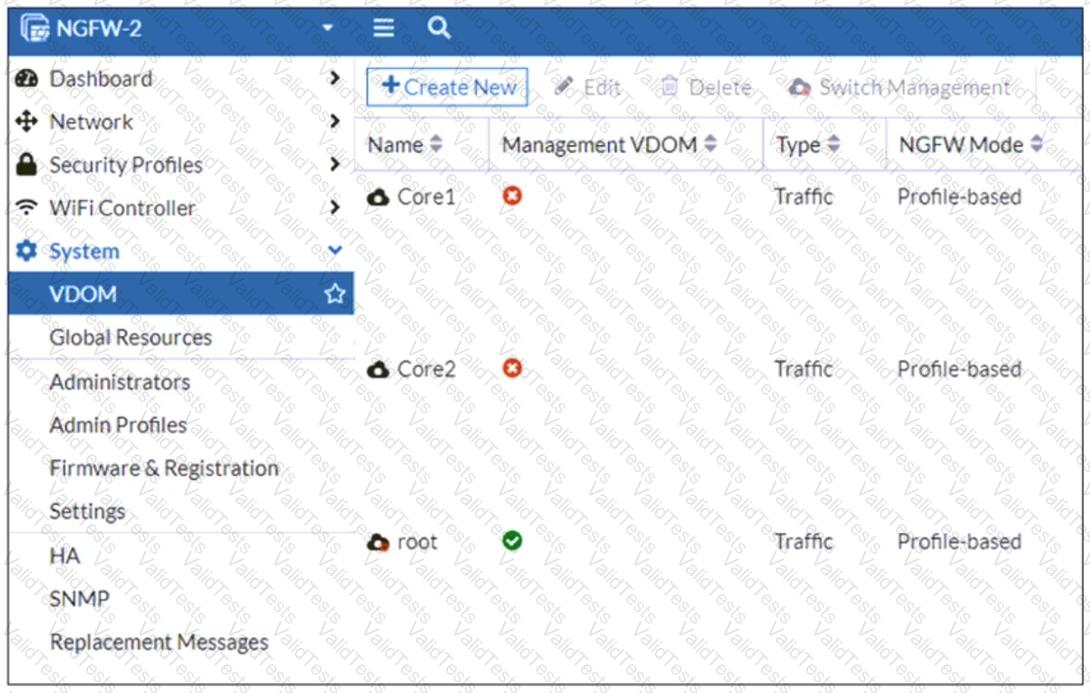
An administrator discovers that webfilter stopped working in Core1 and Core2 after a maintenance window.
Which two reasons could explain why webfilter stopped working? (Choose two.)
Refer to the exhibit, which shows an ADVPN network
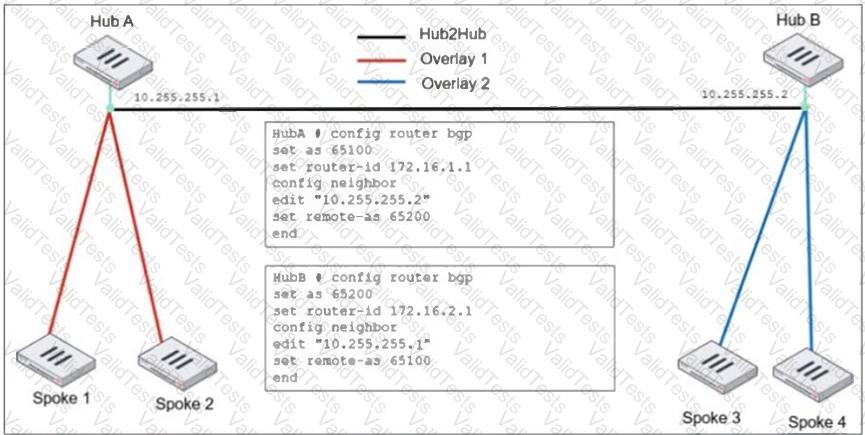
An administrator must configure an ADVPN using IBGP and EBGP to connect overlay network 1 with 2.
What two options must the administrator configure in BGP? (Choose two.)
Refer to the exhibit.
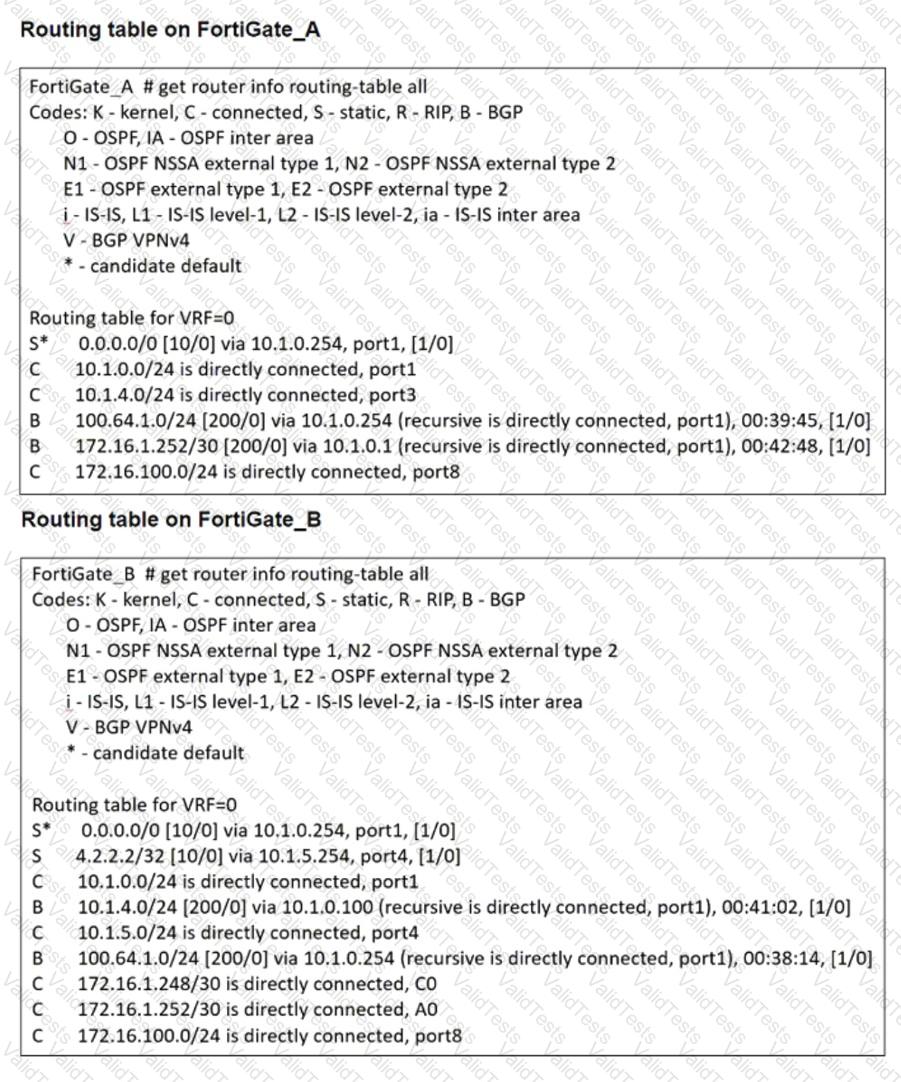
The routing tables of FortiGate_A and FortiGate_B are shown. FortiGate_A and FortiGate_B are in the same autonomous system.
The administrator wants to dynamically add only route 172.16.1.248/30 on FortiGate_A.
What must the administrator configure?
Refer to the exhibit, which contains a partial VPN configuration.
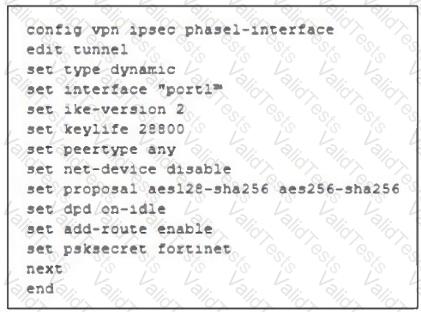
What can you conclude from this VPN IPsec phase 1 configuration?
A vulnerability scan report has revealed that a user has generated traffic to the website example.com (10.10.10.10) using a weak SSL/TLS version supported by the HTTPS web server.
What can the firewall administrator do to block all outdated SSL/TLS versions on any HTTPS web server to prevent possible attacks on user traffic?
Refer to the exhibits. The exhibits show a network topology, a firewall policy, and an SSL/SSH inspection profile configuration.
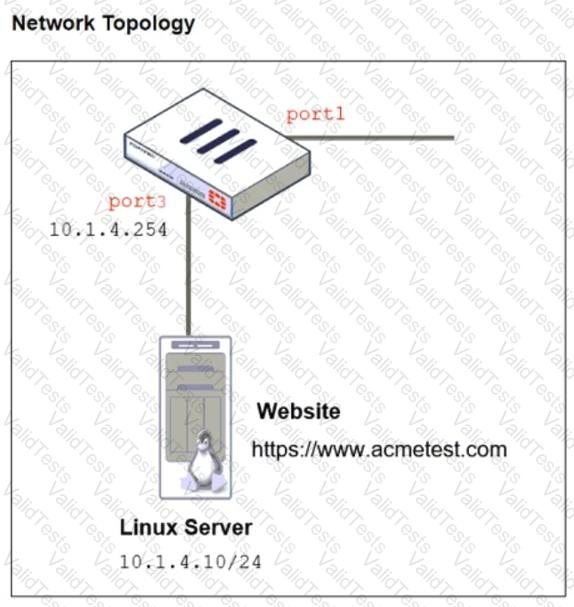
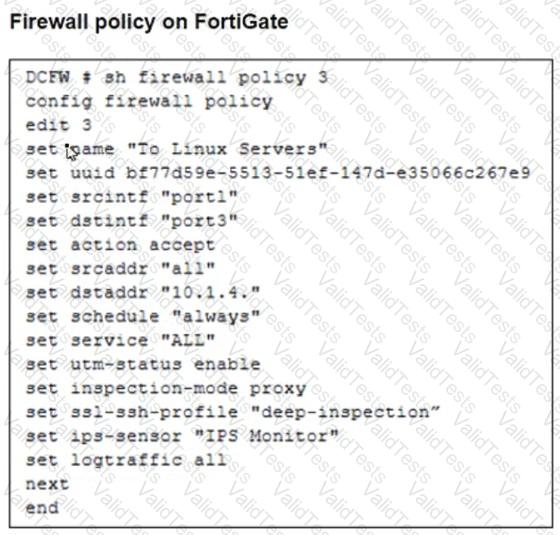
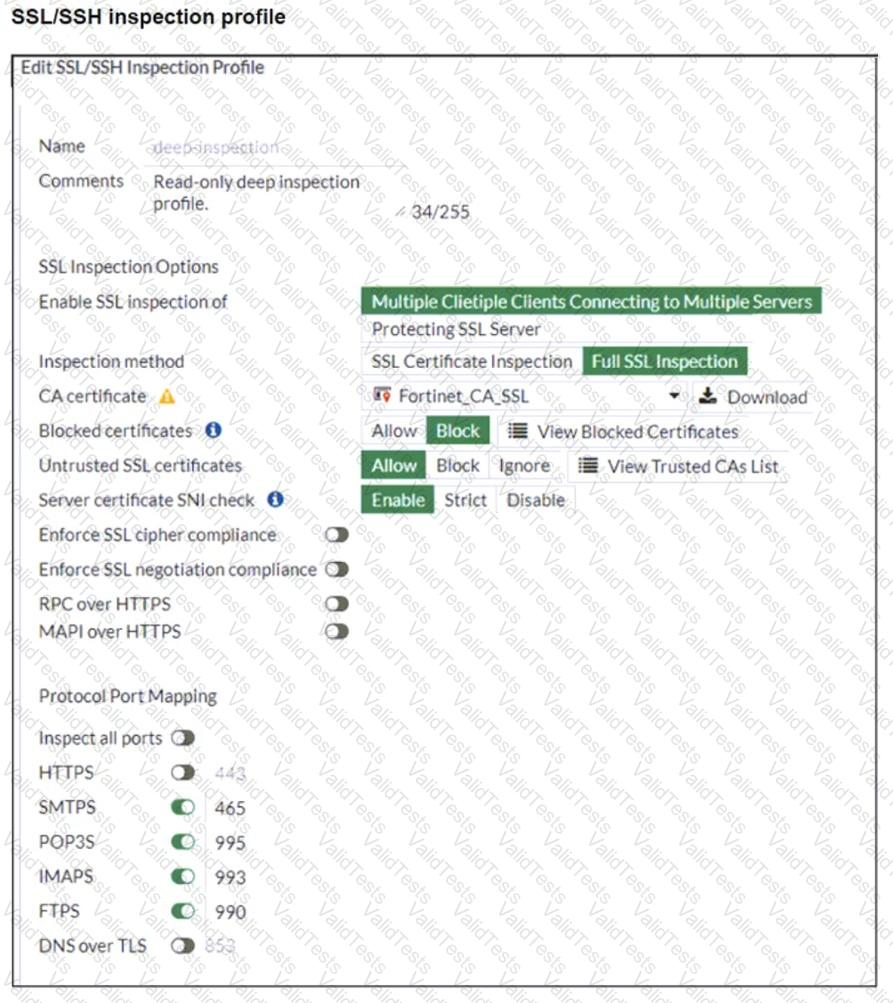
Why is FortiGate unable to detect HTTPS attacks on firewall policy ID 3 targeting the Linux server?
What does the command set forward-domain
An administrator needs to install an IPS profile without triggering false positives that can impact applications and cause problems with the user's normal traffic flow.
Which action can the administrator take to prevent false positives on IPS analysis?